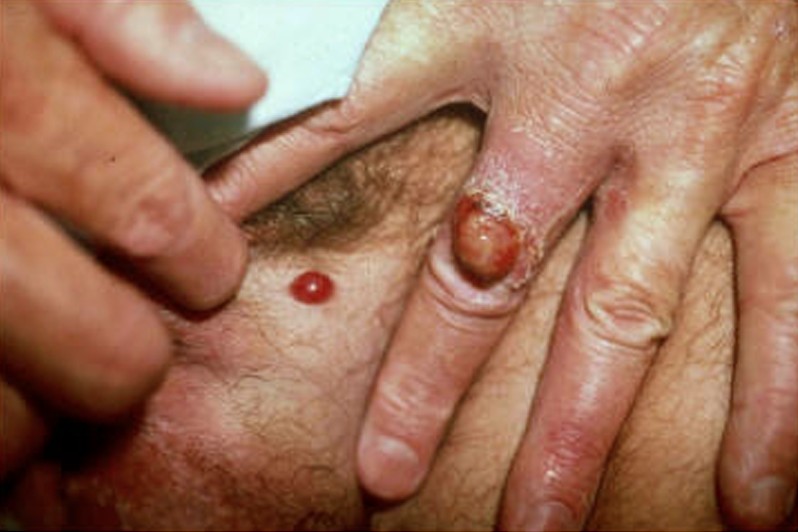Bacillary Angiomatosis
Bacillary angiomatosis is an infection of the skin and the subcutaneous tissue that also has a systemic involvement. This medical condition is caused by the infection with Bartonella, a gram negative bacteria and it often affects those who have a weakened immune system. Fortunately, there is a treatment for this condition and the majority of the patients respond well to the administered treatment. However, if this condition is left untreated, it has a high mortality rate. Bacillary angiomatosis is encountered in patients who are infected with HIV, being the second most common cause why angiomatous lesions appear on the skin.
This medical condition was first described in 1983, in a patient who was infected with the HIV virus. Today, the diagnosis of bacillary angiomatosis is also made in patients who have undergone organ transplantation and in those who have a weakened immune system because of other causes than HIV infection. In rare cases, it has been diagnosed in patients with a competent immune system. The systemic nature is one of the most important things to take into consideration, as the infection with Bartonella can lead to problems in various organs, including the brain, bone marrow, heart, lungs and kidneys.
What are the Symptoms of Bacillary Angiomatosis?
These are the most common symptoms of bacillary angiomatosis:
- The lesions on the skin have the following characteristics:
- A single lesion or multiple lesions can appear on the skin (papules)
- Their color varies from one person to the other (purple, color of the flesh, no color)
- Lesions resemble hemangiomas
- Variable size (from 1mm to several cm)
- Scaly nodules can also be present on the skin
- Large masses are also encountered
- Extensive plaques can affect the extremities
- Excessive pigmentation
- Excessive keratinization – this leads to induration of the plaque
- Areas most affected include:
- Oral mucosa
- Tongue
- Oropharynx
- Nose
- Pain
- Areas most affected by pain include the forearms and legs (bone pain)
- Systemic involvement:
- Fever/chills
- Sweating during the night
- General consumption
- Anorexia
- Weight loss
- Abdominal pain – This is often accompanied by nausea and vomiting
- Mass in the abdomen – This mass is accompanied by bleeding inside the gastrointestinal tract
- If the colon is affected, then the following symptoms will occur:
- Abdominal cramps
- Diarrhea with blood
- If the central nervous system is affected, then the following symptoms are expected:
- Depression
- Psychosis
- Changes in personality
- Anxiety
- Excessive irritability
- Headache
- Neuralgia (most common affected – trigeminal nerve)
- Seizures
- Back pain
- The patient might have trouble breathing if the larynx is obstructed
Causes of Bacillary Angiomatosis
The most common causes that lead to the appearance of bacillary angiomatosis are:
Bacterial infection with the following organisms:
- Bartonella henselae
- Method of transmission – cat scratch/bite
- Vector of transmission – ticks/fleas
- Bartonella quintana
- Method of transmission – from one human to the other
- Vector of transmission – lice.
Treatment
These are the most common courses of treatment recommended for bacillary angiomatosis:
Antibiotic therapy
- Erythromycin – patients respond the best to this treatment (oral administration)
- Tetracycline – recommended in patients who do not tolerate the treatment with erythromycin
- Cephalosporin/aminoglycoside – indicated in more severe cases
- Doxycycline in combination with rifampin – recommended in patients whose immune system is severely compromised
- Doxycycline is not recommended in pregnant women
- Other antibiotics that can be administered with promising results:
- Clarithromycin
- Azithromycin
- Ciprofloxacin
- Isoniazid
- Gentamicin
- The period for the antibiotic therapy lasts somewhere between eight and twelve weeks, depending on each patient
- In case of systemic involvement, the treatment is administered for prolonged periods of time (three months)
- In case of HIV infection, the treatment might be administered for the entire duration of life, concomitantly with antiretroviral therapy
Other therapy options, such as corticosteroids, cytotoxic agents and radiation are not effective in this medical condition.
Drainage
- Lymph nodes that are filled with pus
- Blisters
Supportive care
- Administration of intravenous fluids for hydration
- Anti-inflammatory medication – this can help with the pain and they can also reduce the fever
Adjuvant therapy
- Cryotherapy
- Electrodesiccation and curettage
- Surgical excision – recommended for solitary cutaneous lesions
Preventive measures
- These are recommended to avoid the infestation with the actual bacteria
- Contact with unknown cats should be avoided
- If you are the owner of the cat, it is recommended that you take care of the anti-flea treatment (flea and tick collar)
- Clothing and bedding treatments are required as well to prevent the infestation
- Delousing is also recommended in case of lice (there is a special powder that can administered directly to the skin)
- Macrolide prophylaxis in HIV-infected patients.
Bacillary Angiomatosis Pictures
Collection of photos, images and pictures of Bacillary Angiomatosis…





